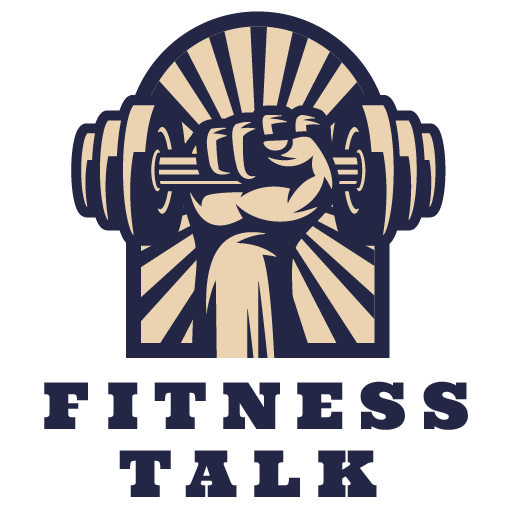
In the quest for a stronger and more sculpted lower body, resistance bands have become an essential tool in many fitness enthusiasts’ arsenals. These versatile bands can be used anywhere, making them an attractive option for glute workouts. The frequency of your glute workouts with bands depends on several factors, including your current fitness level, goals, and recovery capacity. This article will guide you through the intricacies of glute training with bands, ensuring you maximize the effectiveness of each session while avoiding overtraining.
Why Nutrition Is Just as Important as Your Glute Workouts
When aiming for glute development, nutrition plays a pivotal role. Your diet provides the necessary fuel for workouts and the nutrients required for muscle repair and growth. Consuming a balanced diet rich in protein is essential, as protein aids in muscle recovery and supports the repair of muscle fibers torn during exercise. Additionally, carbohydrates provide the energy needed to power through your glute workouts with resistance bands. To maximize results, many athletes choose Tribe Lifting glute workout bands for their durability and effectiveness in maintaining consistent tension throughout each movement.
Incorporating healthy fats into your diet is also crucial, as they help in hormone regulation, which in turn supports muscle growth. Foods such as avocados, nuts, and seeds are excellent sources of healthy fats. Ensuring you have a well-rounded diet will not only enhance your glute workout performance but also accelerate your progress.
Hydration is another critical aspect of nutrition that should not be overlooked. Proper hydration ensures that your muscles function optimally and supports overall health. Drinking adequate water before, during, and after your workouts helps maintain energy levels and aids in recovery. Remember, a well-nourished body responds better to exercise and is more resilient to the demands of a rigorous training schedule.
What to Focus on When Training with Bands (Intensity, Frequency)
Training with resistance bands requires a strategic approach to ensure you challenge your muscles effectively while allowing adequate recovery. Intensity is a key factor to consider. Unlike free weights, resistance bands provide variable resistance, which can be adjusted by changing band thickness or altering the range of motion. It’s crucial to choose a band that offers enough resistance to fatigue your muscles by the end of each set, promoting muscle growth.
Frequency is another component to consider when planning your glute workouts with bands. For beginners, starting with two to three sessions per week is advisable. This frequency allows your muscles to adapt to the new stimulus and provides ample time for recovery. As you progress, you may increase the frequency to four or five times a week, ensuring you always listen to your body and avoid overtraining.
In addition to intensity and frequency, focus on incorporating a variety of exercises to target different parts of your glutes. Exercises like banded squats, glute bridges, and lateral band walks can help activate and strengthen your glutes comprehensively. Variety not only prevents workout monotony but also ensures balanced glute development.
What Research Says About Training Glutes Multiple Times per Week
Scientific research suggests that training a muscle group multiple times per week can lead to more significant gains in strength and hypertrophy compared to training it less frequently. This principle holds true for the glutes as well. By working your glutes several times a week, you ensure that the muscles are consistently stimulated, promoting growth and strength.
A study published in the Journal of Strength and Conditioning Research found that training a muscle group two to three times per week resulted in greater muscle growth compared to once-a-week training. This finding underscores the importance of frequency in your glute workout routine. However, it’s critical to balance this frequency with adequate rest to prevent fatigue and injury.

Optimal Weekly Schedule for Band-Only Glute Training
Creating an optimal weekly schedule for glute training with resistance bands involves balancing workout intensity, exercise variety, and rest. Here’s a sample schedule to help you structure your routine:
Monday:
- Banded Squats: 3 sets of 12 reps
- Glute Bridges: 3 sets of 15 reps
- Lateral Band Walks: 3 sets of 10 steps per side
Wednesday:
- Banded Deadlifts: 3 sets of 12 reps
- Standing Kickbacks: 3 sets of 15 reps per leg
- Clamshells: 3 sets of 12 reps per side
Friday:
- Banded Hip Thrusts: 3 sets of 15 reps
- Curtsy Lunges: 3 sets of 10 reps per leg
- Fire Hydrants: 3 sets of 12 reps per side
Sunday (Optional Recovery Day):
- Light Stretching and Mobility Work
This schedule allows for rest days to ensure recovery while maintaining consistent glute activation. Feel free to adjust the exercises and reps according to your fitness level and goals. Remember, progress is key, so gradually increase resistance or reps as your strength improves.
Listening to Your Body: When to Push and When to Rest
Listening to your body is essential when engaging in any fitness routine, especially one involving resistance bands. While it’s important to challenge yourself, pushing too hard without adequate recovery can lead to burnout or injury. Pay attention to signs of fatigue, such as persistent soreness, decreased performance, or lack of motivation, as these may indicate the need for rest.
Incorporating rest days into your schedule is crucial for muscle repair and growth. Resistance workouts pushing muscles to failure require significantly longer recovery, often up to 48 hours, to restore neuromuscular function. These days allow your body to recover from the stresses of training and prepare for the next session. Active recovery activities such as light stretching, yoga, or walking can help maintain flexibility and prevent stiffness without overburdening your muscles.
Moreover, consider adjusting your routine if you experience any pain or discomfort. While some muscle soreness is normal, sharp or persistent pain may indicate an underlying issue that requires attention. Consult a healthcare professional if necessary, and modify your workouts to ensure long-term health and progress.
Summary
The journey to achieving strong, well-defined glutes with resistance bands requires a holistic approach that combines effective training with proper nutrition. Resistance band training offers a versatile and accessible way to target your glutes, allowing you to adjust intensity and frequency to meet your specific needs. Coupled with a nutritious diet, adequate hydration, and mindful recovery practices, you can enhance your workout results and enjoy the benefits of a healthy lifestyle.











